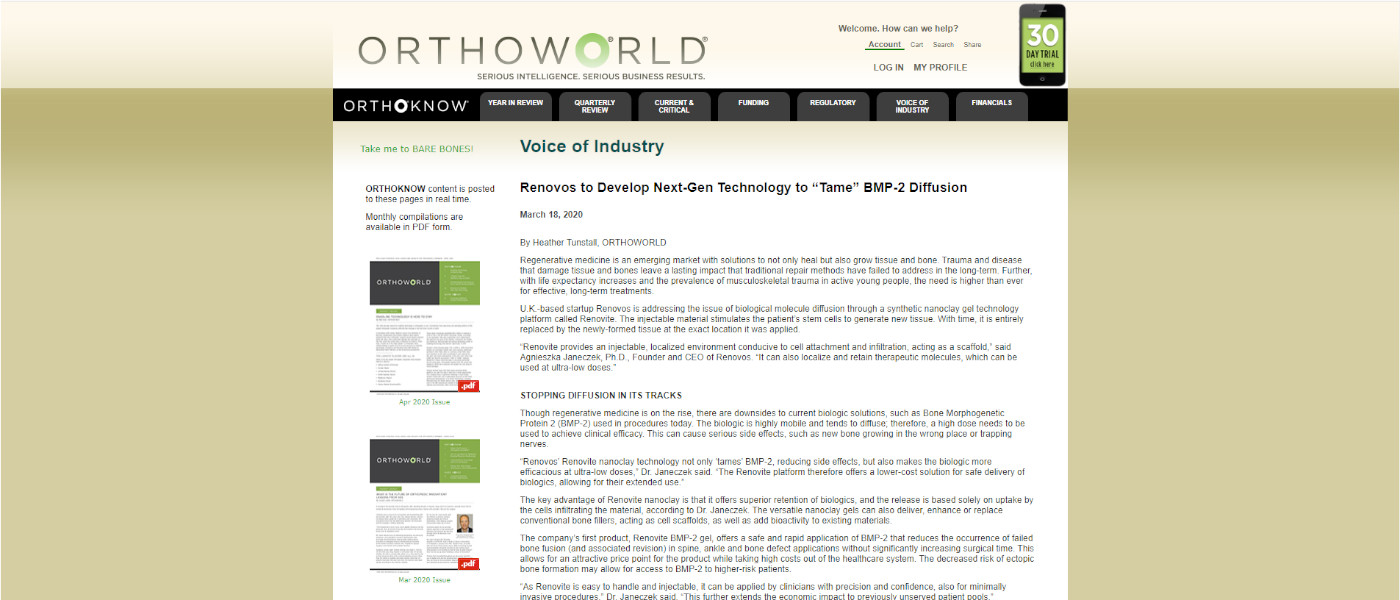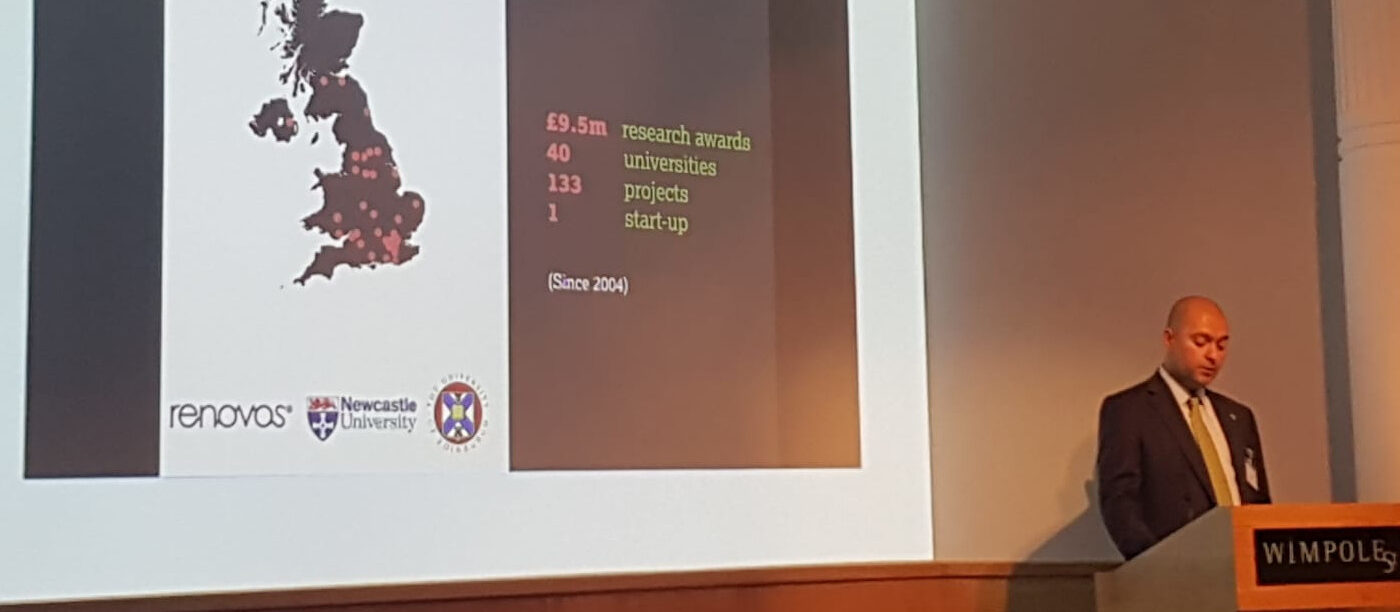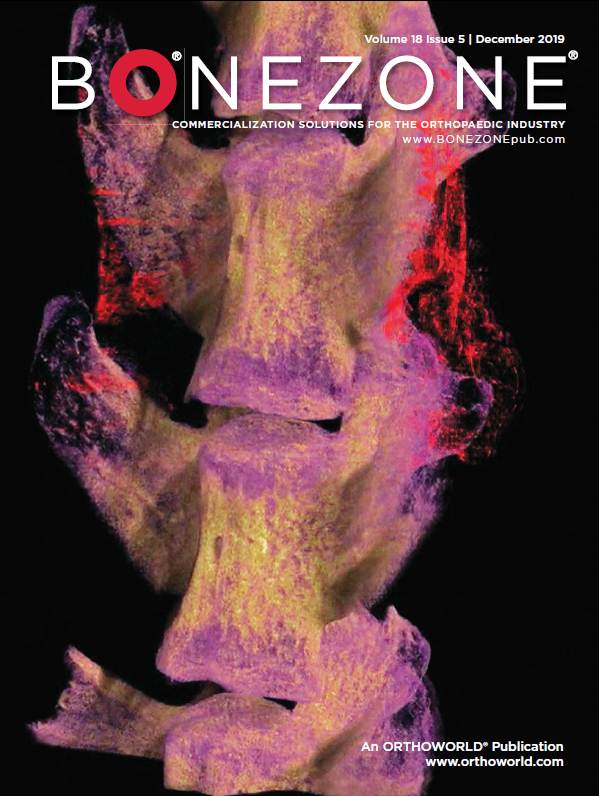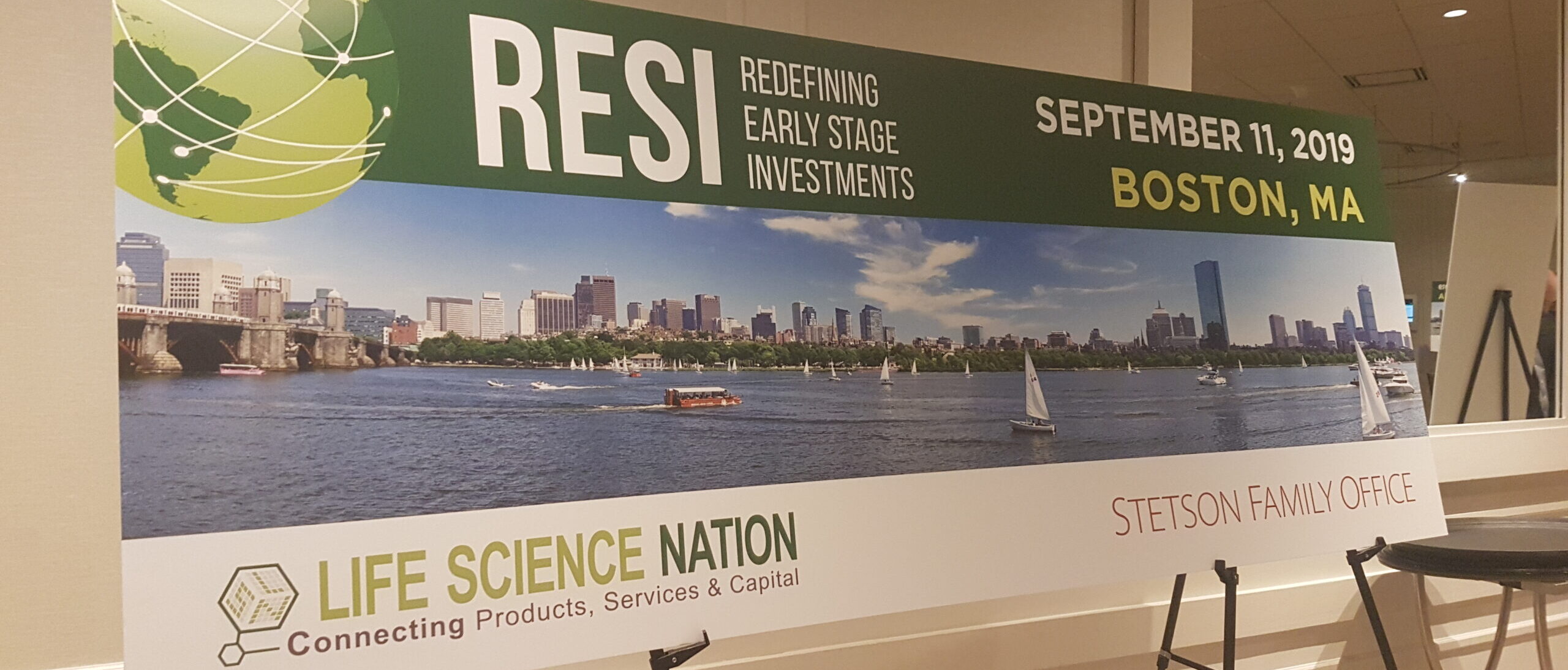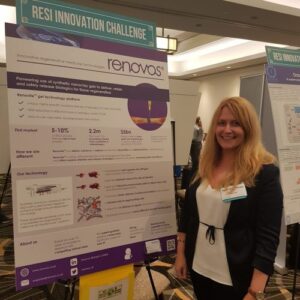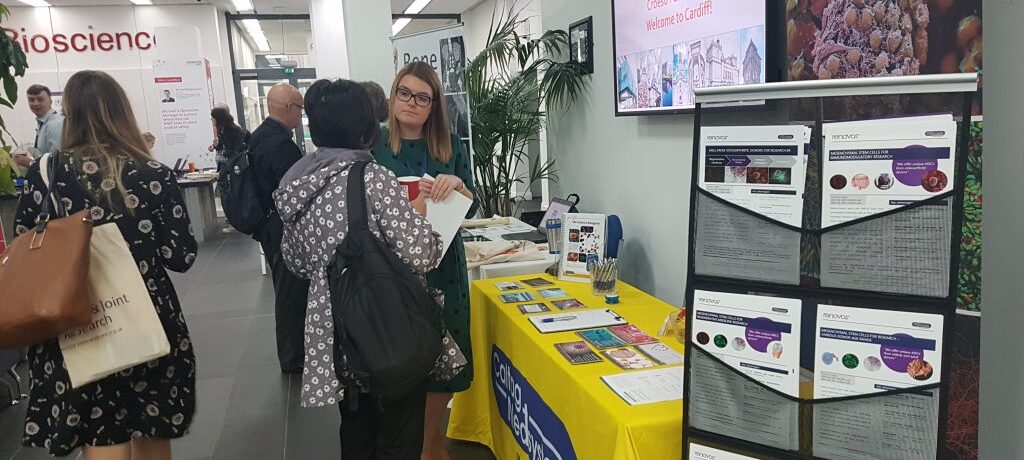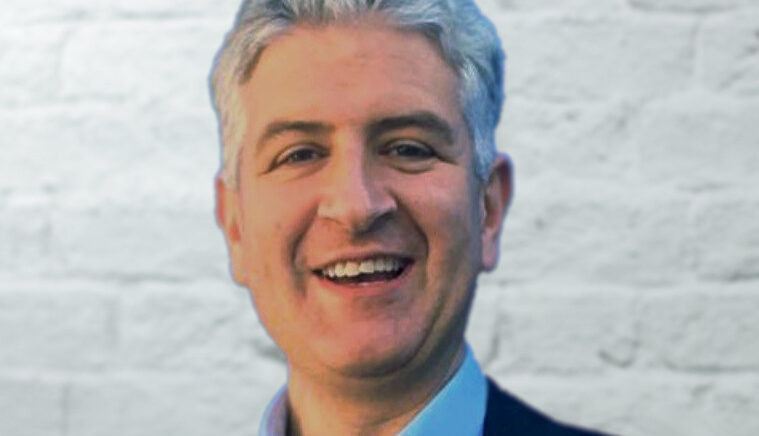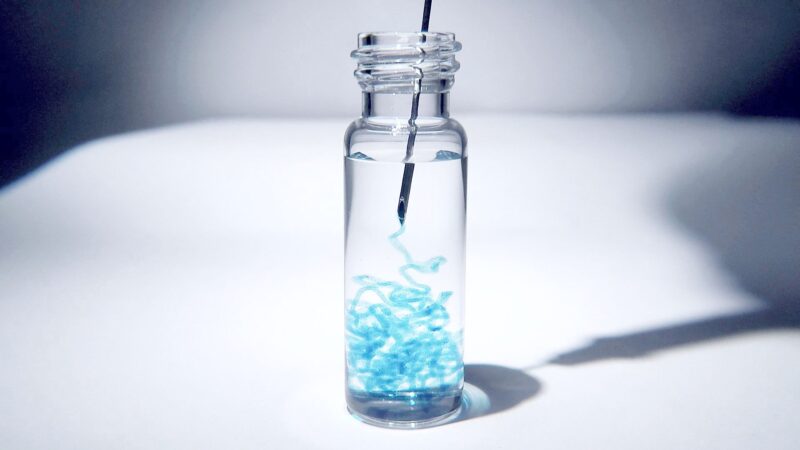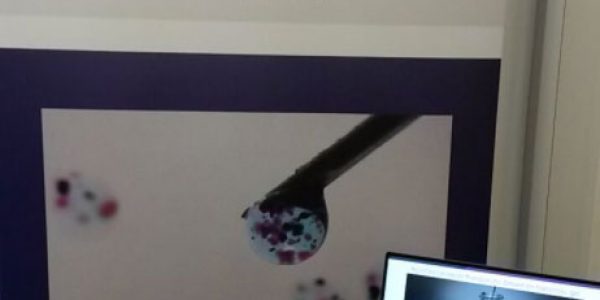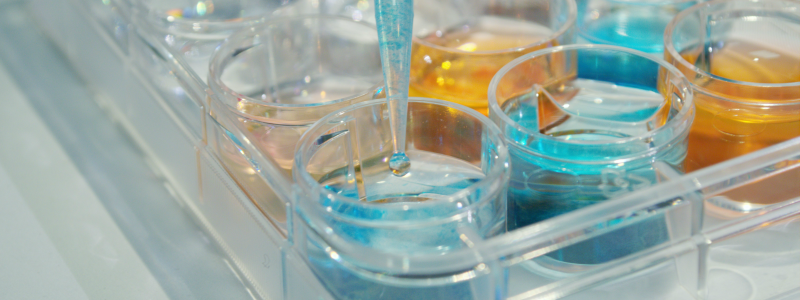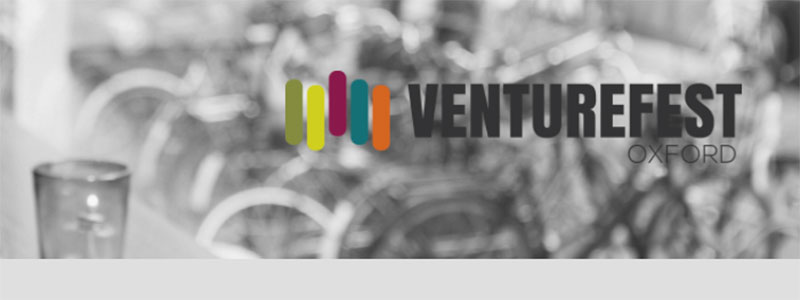Renovos has recently been awarded one of the very first charity investments in the UK. In a progressive move to find new ways to support people living with painful and debilitating bone and joint conditions, Orthopaedic Research UK (ORUK), in partnership with healthtech experts HS., has announced a £140,000 investment from the recently launched Ronald Furlong Fund.
Renovos has now raised £700k in equity and grant funding to date to support the development of new nanoclay gel technology RenoviteⓇ, which has the potential to transform orthopaedic surgery. The gel allows a 100x lower dose of powerful regenerative therapeutic agent to be precisely delivered and localised to the sites where needed, and early trial data demonstrates that it contributes to improved bone healing. This consequently offers a step-change improvement in safety, efficacy and ease of use, as well as reduced adverse events and complications compared with current orthopaedic interventions.
Dr Arash Angadji, CEO of ORUK said:
“We are the first charity supporting start-ups with a focus on musculoskeletal health in the UK. The Ronald Furlong Fund initiative will play an important role in assisting entrepreneurs and innovators to quickly turn ideas into reality, with measurable benefits for the entire healthcare ecosystem.
Effective collaboration with HS. was instrumental in identifying Renovos and their exciting technology, and I am delighted to welcome them as ORUK’s first investment.”
Professor Richard OC Oreffo, Founder and CSO of Renovos said:
“We are delighted to receive support from ORUK, which will aid the development of our next-generation orthopaedic regenerative medicine solutions, harnessing nanoclay gels to deliver bone-forming agents safely and cost-effectively.
“The partnership will significantly enhance Renovos’ ability to further develop innovative technologies to support the ageing population as well as younger, active individuals.”
Bringing Renovos into the HS. portfolio, Founding Partner, Dr. James Somauroo said:
“It quickly became apparent that Renovos has the potential to fundamentally change the way extremely powerful and sometimes harmful drugs are given around bone. During the interview phase, we were impressed by the immense knowledge and expertise of the team and we’re now excited to join the journey and to use our networks to help take them to the next level.”
Renovos’ RenoviteⓇ is underpinned by decades of pre-clinical research at the University of Southampton and Professor Peter J.S. Smith, Director, Institute for Life Sciences, University of Southampton has praised the innovation for its potential to create positive impact for patients and health systems of the future.
If you would like to find out more about Renovos please contact: enquiries@renovos.co.uk
Or you could read the news in one of the following publications:

